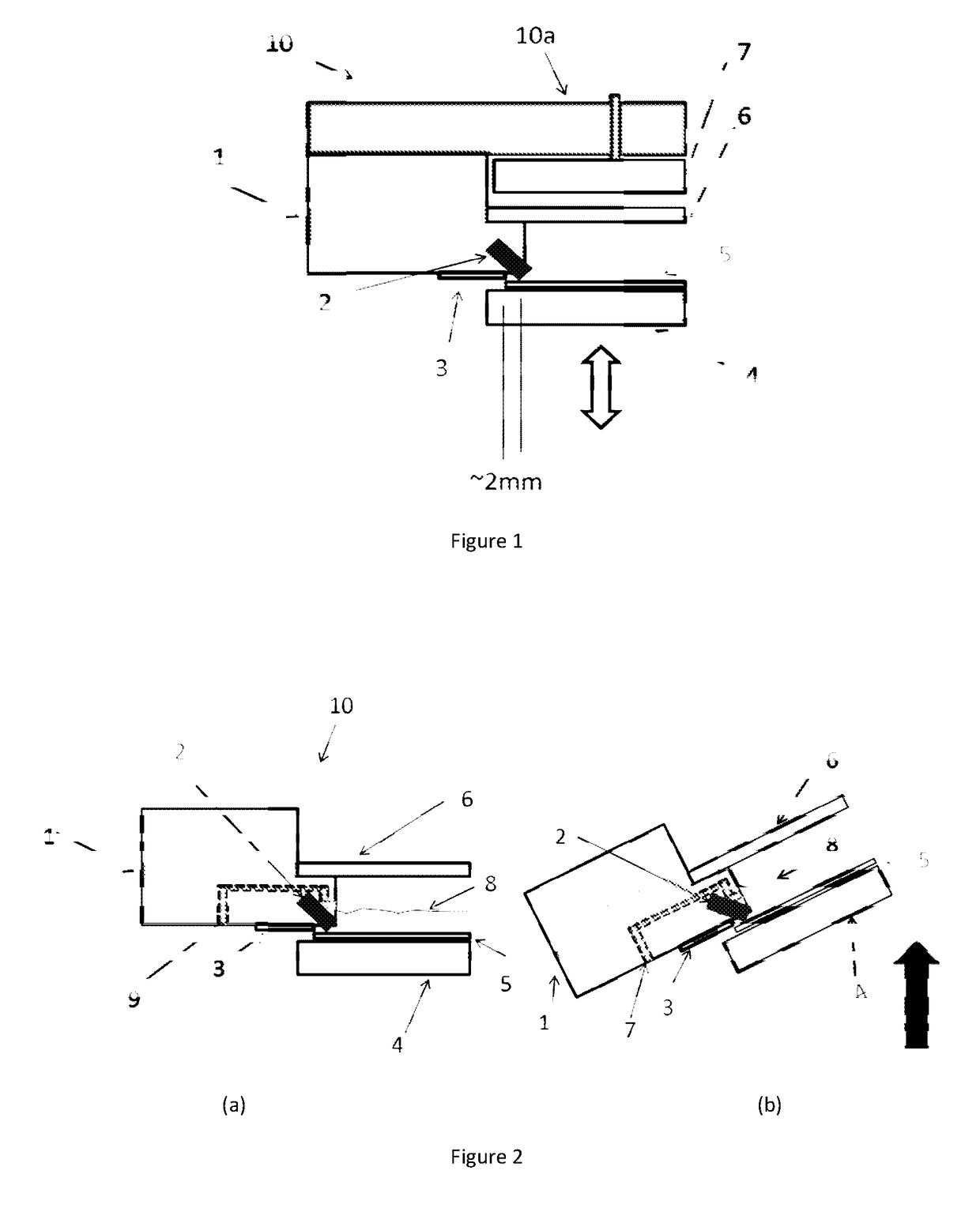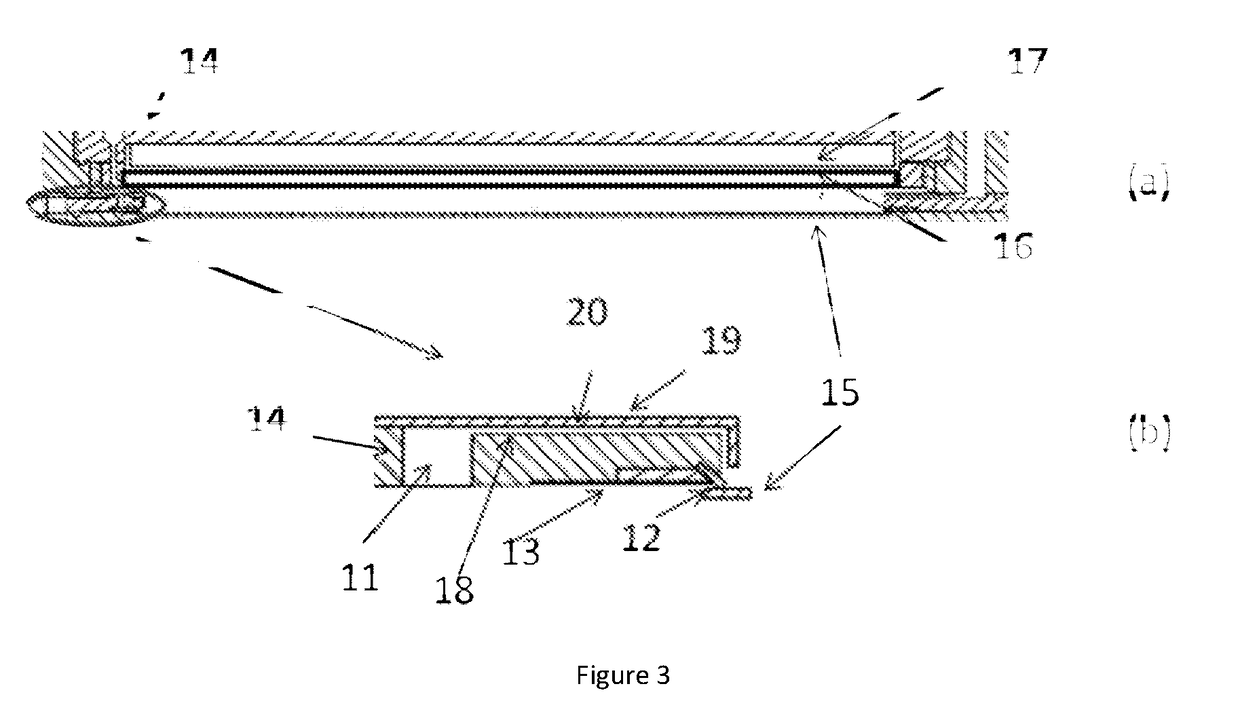Electrochemical deposition chamber
a technology of electrochemical and deposition chamber, which is applied in the direction of sealing devices, tanks, cells, etc., can solve the problems of reducing the number of electrolyte lost, complicating the pre and post deposition steps, and adding to the cost of electrolyte loss
- Summary
- Abstract
- Description
- Claims
- Application Information
AI Technical Summary
Benefits of technology
Problems solved by technology
Method used
Image
Examples
Embodiment Construction
[0050]FIG. 1 shows a first embodiment of a chamber of the invention, depicted generally at 10. The chamber 10 is an electrochemical deposition chamber for processing a substrate 5. The substrate 5 is placed on a platen 4 either by hand or by mechanical means. The platen 4 is raised to compress an elastomeric seal 2 on the upper surface of the substrate 5 to form a fluid seal. At the same time as the fluid seal is being made, electrical contact is made with a seed layer on the upper surface of the substrate 5 by means of conductive springs 3. The seal 2 and conductive springs 3 are retained in a lower chamber body 1. As explained in more detail below, an advantage of the present invention is that it is possible to make contact within 1-2 mm of the edge of the substrate 5.
[0051]A soluble anode 7, which could be Cu or phosphorized Cu for Cu deposition, is located parallel with the wafer surface at or near to the top of the chamber 10. Electrical connections to the anode 7 and fluid con...
PUM
| Property | Measurement | Unit |
|---|---|---|
| diameter | aaaaa | aaaaa |
| separation distances | aaaaa | aaaaa |
| separation distances | aaaaa | aaaaa |
Abstract
Description
Claims
Application Information
 Login to View More
Login to View More - R&D
- Intellectual Property
- Life Sciences
- Materials
- Tech Scout
- Unparalleled Data Quality
- Higher Quality Content
- 60% Fewer Hallucinations
Browse by: Latest US Patents, China's latest patents, Technical Efficacy Thesaurus, Application Domain, Technology Topic, Popular Technical Reports.
© 2025 PatSnap. All rights reserved.Legal|Privacy policy|Modern Slavery Act Transparency Statement|Sitemap|About US| Contact US: help@patsnap.com



